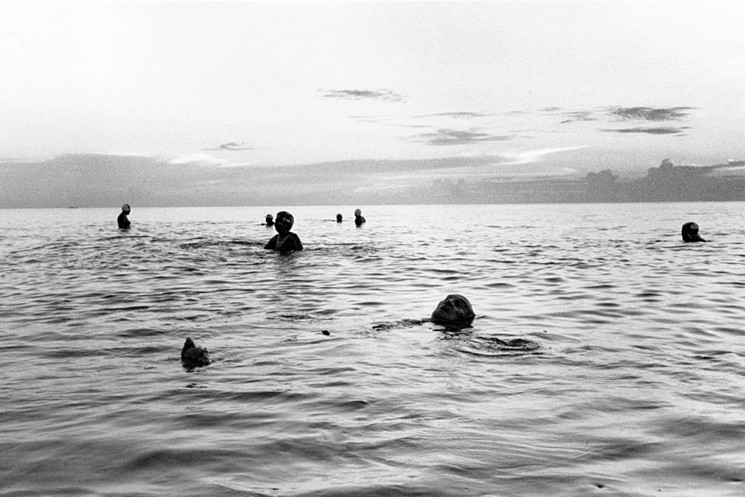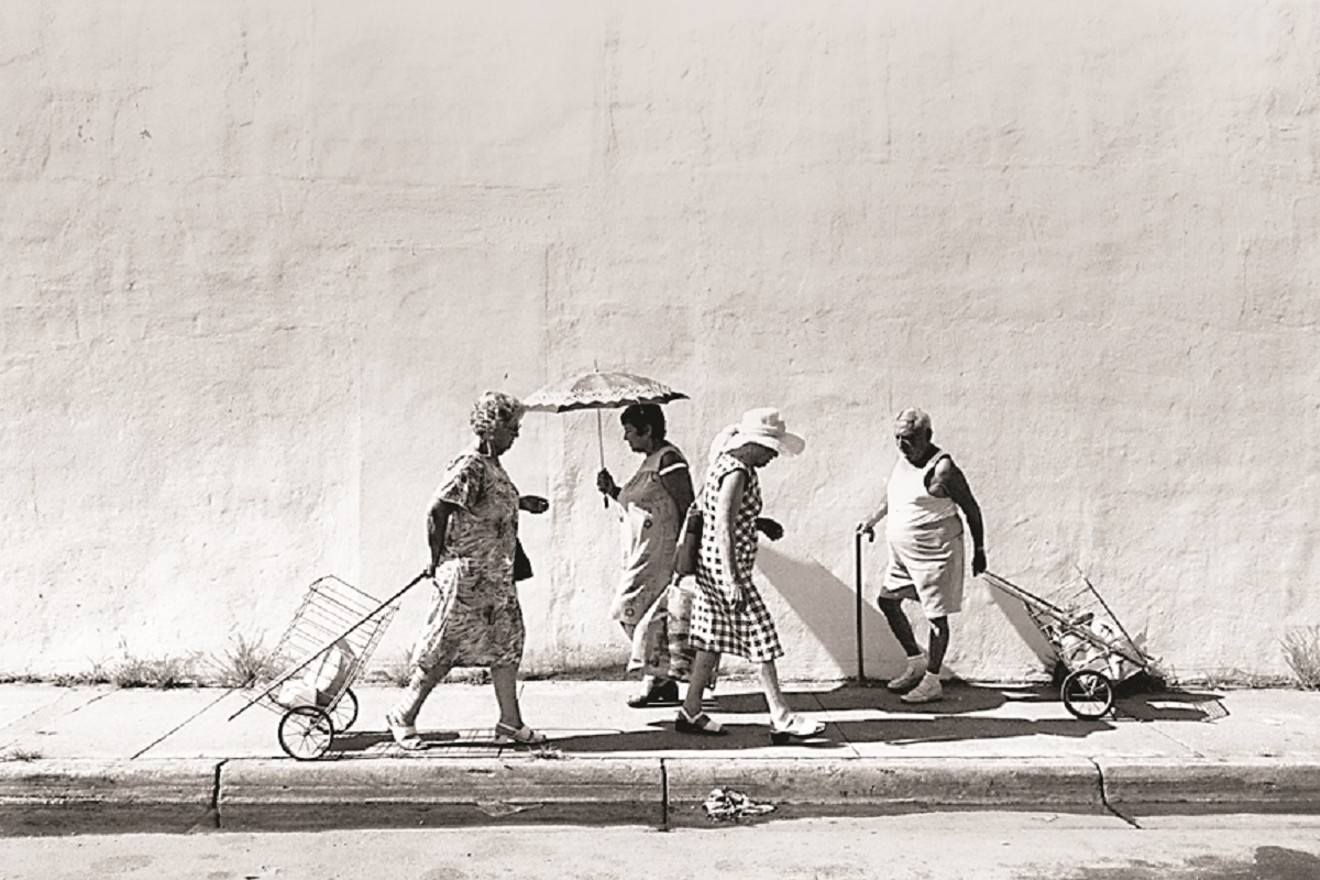It wasn't always so.
“You could walk around South Beach and not see a single person under 70,” says Gary Monroe, who, along with another Miami Beach native, Andy Sweet, photographed the area's sun-seeking, mostly Jewish oldsters during the late 1970s and '80s as part of what has become an extraordinary visual record of an era now long gone.
The images are on display in the exhibit "Side-by-Side in Old South Beach" through February 16 at the Adolph and Rose JCC’s Sandler Center in Boca Raton.
This isn’t the photos’ first go-round in a museum or a collection culled for the big screen, says Terri Berns, exhibition curator and director of the Judi & Allan Schuman Museum Gallery at the JCC. They have appeared at several venues and were the grist for the 2018 documentary film The Last Resort, directed by Dennis Scholl and Kareem Tabsch.
The JCC display is unique, however, marking the first time the Monroe and Sweet images have been presented next to one another.
“Immediately after I saw the documentary film, my goal was to make this side-by-side duo exhibition a reality,” Berns says. “Gary Monroe and the late Andy Sweet so beautifully captured a time and place familiar to me with their extraordinary images that are both immensely powerful and remarkably intimate — a true testament and sense of humanity for their subjects and their skills as photographers.”
Each in their own distinct way, Monroe and Sweet captured their subjects on South Beach with "sincere interest, empathy, and honesty." Monroe, who employed a Leica camera, shot in dramatic black-and-white, while Sweet shot in vivid color using a Swiss-made Hasselblad. Sweet, Berns says, was more casual and spontaneous in style versus Monroe, whose photos appear more meticulous and structured.

Gary Monroe, Sunrise Swimmers 10th Street (1980), gelatin silver print.
Photo courtesy of Gary Monroe
Monroe, who spoke at the exhibit's opening reception January 5, calls the photos “a very precious legacy.” He says about a quarter of the crowd at the opening was from the Miami area. “They had to bring out more chairs," he explains.
“If you go back 30 years, South Beach was exactly the opposite of what it is today,” Monroe says. Among the factors defining the culture at the time, "the community was packed with people who had survived the Holocaust,” he explains.
“Today, when you walk along Ocean Drive, the restaurants all have sidewalk cafés,” he says. But between 1977 and 1986, the period Sweet and Monroe committed to celluloid, “everyone was on the grass, playing cards, having picnics.” He said swimmers in bathing suits decidedly more modest than today’s Speedos and skin-baring bikinis were often seen frolicking in the water. “There used to be ropes that ran about 60 feet from the shore [out] to buoys so people could hang on to them.”
Monroe recalled one of his own images of the past: the sight of seniors running into the water as the sun rose to illuminate the Atlantic Ocean. “I call them 'sunrise swimmers.'”
The Jews who populated South Beach circa 1975 “were not like those of my generation," he says. "We are Americanized Jews,” bereft of many of the habits and traditions their elders had brought to the States.
Monroe remembers South Beach residents as fiercely religious. “There were lots of synagogues — some were even in hotel lobbies.”
The face of South Beach has also transformed to a mecca for the rich and famous and a gathering spot for tourists and folks passing through. Gone — or diminished — are the “eight to ten blocks of apartments west of Washington Avenue” where Jewish residents lived.
Like the people of South Beach today, the Jewish populace “was very active. They went to dances every night. All the hotels had entertainment.”
In their time, the Sweet photos endured dual tragedies. When he was killed in 1982, Sweet's family was too distraught to look at his work, so they stored it — and apparently forgot about it. “Andy’s sister, Ellen Sweet Moss, discovered 30 boxes of his photos in a family storage unit following his untimely death, and Stan Hughes spent ten years restoring Andy's photos,” Berns says.
A familiar face and already an established photographer in the Miami Beach area during that era, Sweet was murdered in his apartment in October 1982 at the age of 29. He was stabbed to death by men reportedly looking for cocaine. Two suspects were eventually convicted of murder, and a third, arrested in 1999 based on DNA evidence, spent 12 years in a psychiatric lockup before being released.
Monroe believes his compatriot was a victim of the vicious crime wave that engulfed South Beach in the 1980s, fueled by rampant drug use and ramped up by the influx of criminals to Florida's southern shores via Cuban boat lifts. As one woman interviewed in the documentary says: “It used to be fun. Now it’s not.”
Looking back, Monroe says, "I'm glad Andy and I worked together. What we did is the last testament to that era."
He adds, “We photographed everyday life in South Beach." There was no need to stage the pictures they took, he says, because "life there was rich and did not need coaxing."
"Side-by-Side in Old South Beach: Photographs by Gary Monroe and Andy Sweet." Through Sunday, February 16, at Levis JCC Sandler Center, 21050 95th Ave. S., Boca Raton; levisjcc.org. Admission is free.











